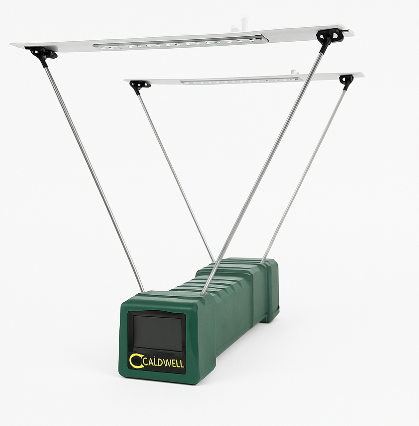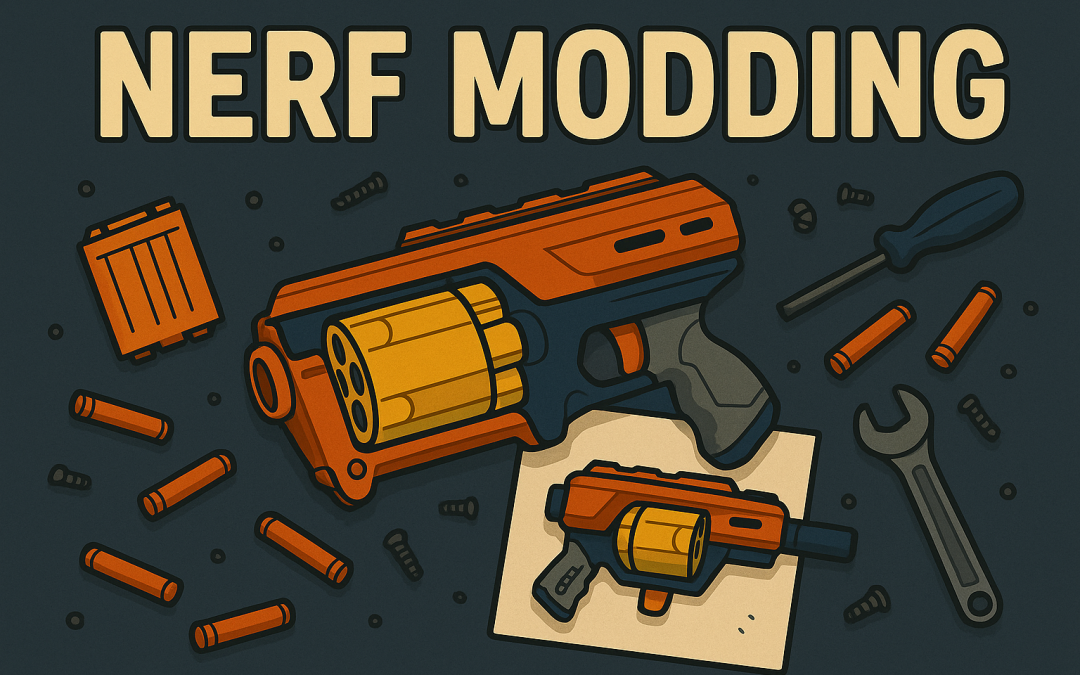⚠️ Disclaimer: Modding NERF blasters can be dangerous if done incorrectly. This guide is for educational purposes only. Proceed at your own risk.
Imagine this: You and your friend are having an epic nerf battle outside and everything seems normal. You manage to finally sight your foe amidst all the chaos, but disaster strikes! You are cornered, with no escape. You grab a seemingly normal NERF blaster from your holster. But this is no normal NERF blaster. This is a modified Stryfe, a high end converted flywheeler that is fully automatic and capable of blasting 20 darts per second. ( Worker full auto mod link here)
Your captor’s expression turns from triumph to shock as you unleash a barrage of foam darts at them and they are tagged out! This is only one possibility of the many that are opened to you once you enter the wonderful world of nerf modding.
But beyond the fun, there is some fascinating engineering and this guide will show you how it all works.
⚠️ Disclaimer: Modding NERF blasters can be dangerous if done incorrectly. This guide is for educational purposes only. Proceed at your own risk.
Imagine this: You and your friend are having an epic nerf battle outside and everything seems normal. You manage to finally sight your foe amidst all the chaos, but disaster strikes! You are cornered, with no escape. You grab a seemingly normal NERF blaster from your holster. But this is no normal NERF blaster. This is a modified Stryfe, a high end converted flywheeler that is fully automatic and capable of blasting 20 darts per second. ( Worker full auto mod link here)
Your captor’s expression turns from triumph to shock as you unleash a barrage of foam darts at them and they are tagged out! This is only one possibility of the many that are opened to you once you enter the wonderful world of nerf modding.
But beyond the fun, there is some fascinating engineering and this guide will show you how it all works.
The History of Nerf Blasters
The History of Nerf Blasters
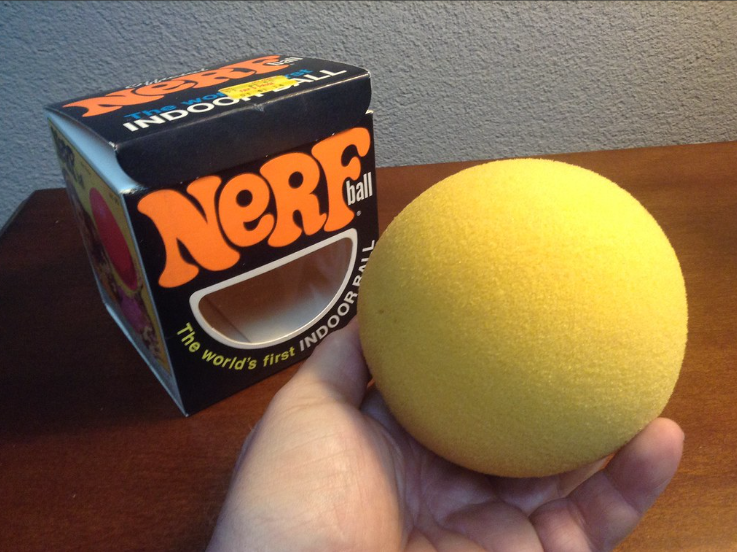
A NERF Blaster is a vital part of almost any kid’s toy arsenal. The brand NERF stands for Non-Expanding Recreational Foam, and sold their first product, the Indoor Ball, which was a ball you could bounce around inside the house without risking breaking things, in 1969. NERF released the Blast-a-Ball in 1989, following earlier products like the NERF Howler and the Nerfoop (a basketball made of NERF material).
The Blast-A-Ball was an instant hit, clocking at around 4 million units in their first year. In 2010, it reached its zenith with 40 million sold that year. In 1992, NERF released their first dart blaster, the Sharpshooter, which was extremely popular.
A NERF Blaster is a vital part of almost any kid’s toy arsenal. The brand NERF stands for Non-Expanding Recreational Foam, and sold their first product, the Indoor Ball, which was a ball you could bounce around inside the house without risking breaking things, in 1969. NERF released the Blast-a-Ball in 1989, following earlier products like the NERF Howler and the Nerfoop (a basketball made of NERF material).
The Blast-A-Ball was an instant hit, clocking at around 4 million units in their first year. In 2010, it reached its zenith with 40 million sold that year. In 1992, NERF released their first dart blaster, the Sharpshooter, which was extremely popular.”
Overall, estimates suggest that over 700 million blasters were sold, not counting the other NERF merchandise and Blast-A-Balls sold. NERF has since developed different subsections that use different ammo, mechanisms or come in different styles. For example, the NERF Rival series is a series of blasters that use yellow foam balls known as ‘high impact rounds’ and are made for adults and teenagers in mind because of their higher muzzle velocity.
NERF Blasters use a variety of methods to propel their projectiles, but here are the most common types used.
Plunger and Spring Mechanism
Plunger and Spring Mechanism
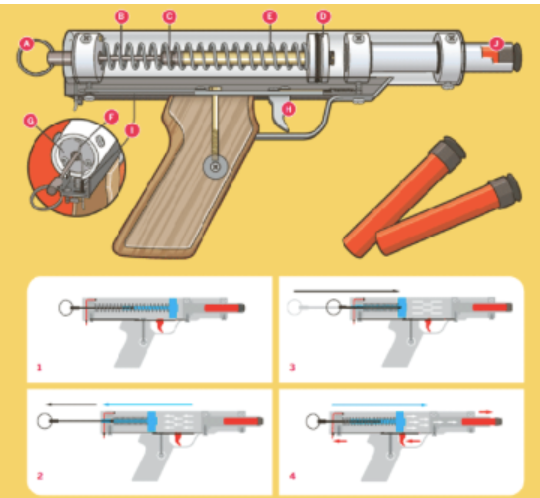
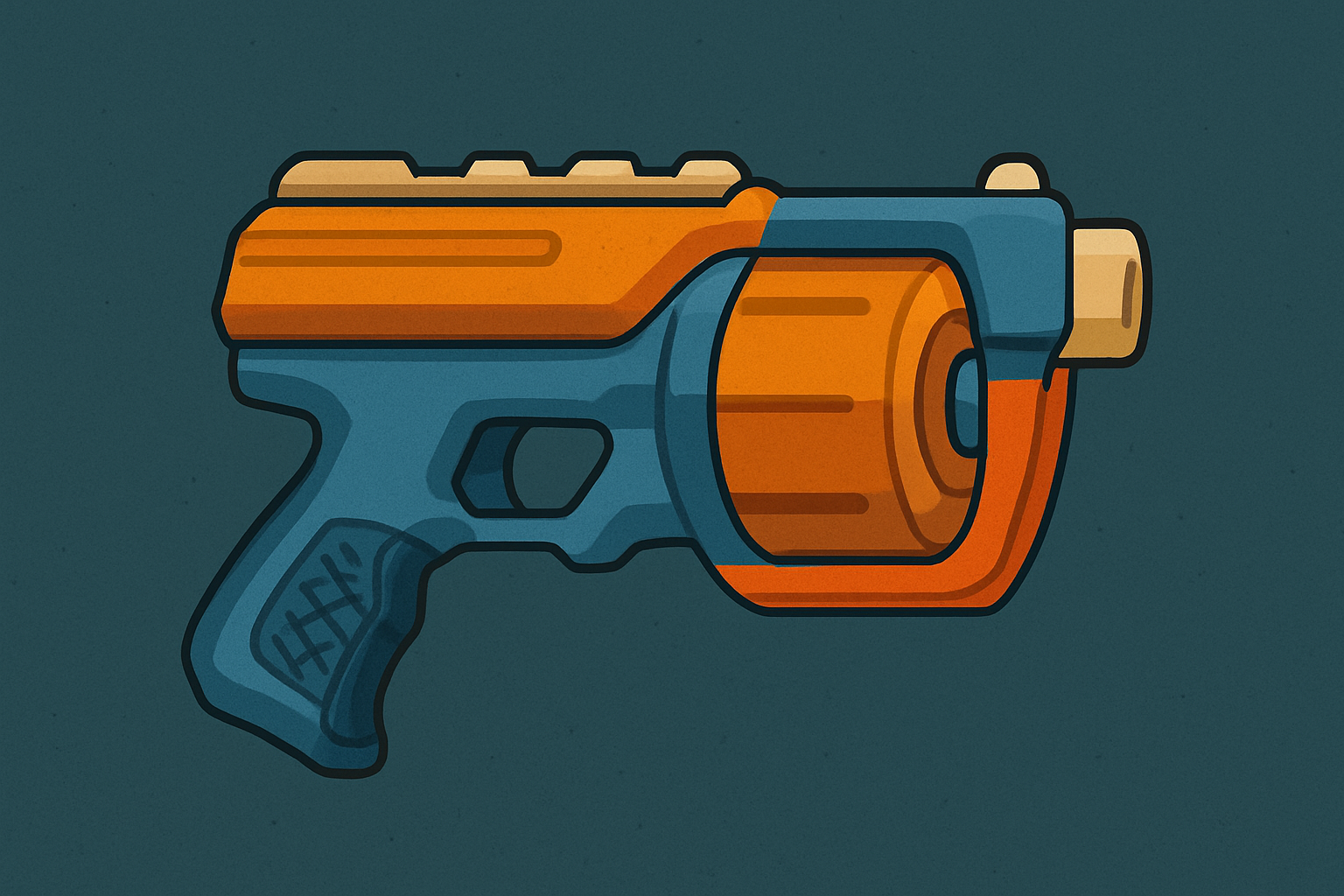
Most NERF Blasters use a Plunger and Spring mechanism to propel a foam dart at safe velocities. A compression spring and plunger are situated in an airtight cylinder, of which one end is connected to the barrel.
A dart is placed into the barrel (or fed from a stock) and the plunger is pulled back. A trigger mechanism stops the plunger from springing back, until the trigger is pulled. When the blaster is fired, the plunger forces the air molecules together, creating high pressure which means they will exert a force in the opposing direction and push the dart that resides there out of the way at high velocities.
Flywheel Blasters
Flywheel Blasters
Flywheel blasters are NERF blasters that use flywheels powered by electric motors, which are used to launch NERF darts semi- or full- automatically without the need to reload for every single shot. Two wheels spin at high velocities which, once they are in contact with the dart, cause it to be launched.
These are mostly mag fed with the exception of the NERF Infinius which can also be rear-loaded. There are two triggers on a flywheel blaster, one being a primary trigger and the other being a rev trigger. The rev trigger spins the flywheels and needs to be held for a few seconds before firing. When the main trigger is pulled, a firing mechanism, usually a mechanical or rack-and-pinion mechanism pushes the dart into the spinning flywheels which promptly launches the dart at near the tangential speed of the flywheel.
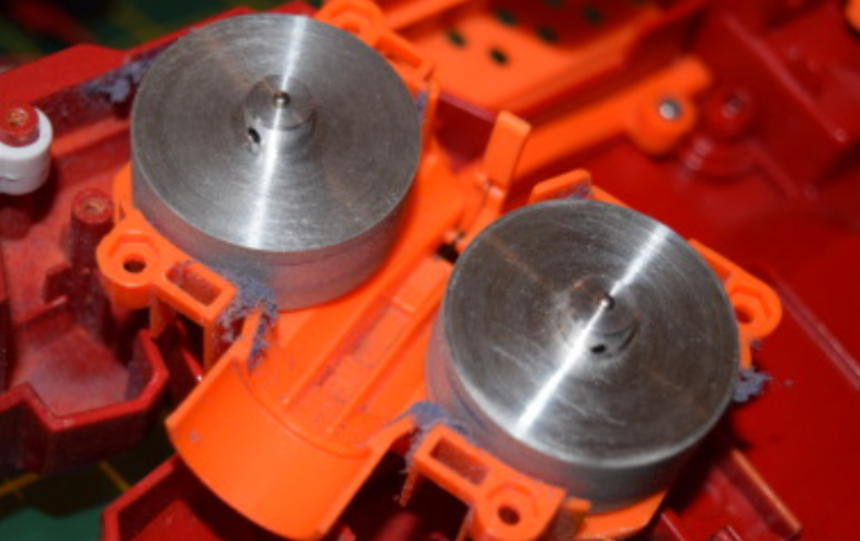
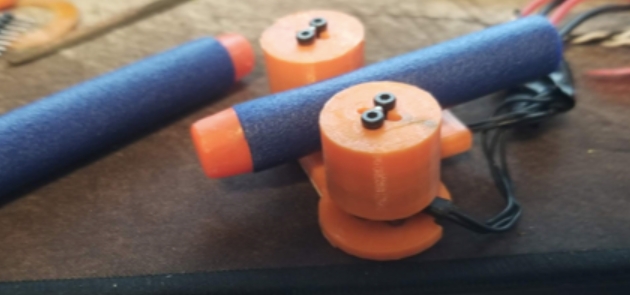
The Maths Behind the Blasters
The Maths Behind the Blasters
If you like complicated calculations (or having your head hurt), read on. If you don’t then skip to the next section.
The way to find out the acceleration of the dart is by finding the tangential speed of the flywheel (the speed of the edges) by using the equation:
vt = r × (2π × RPM / 60)
where vt is the tangential speed of the flywheels, r is the radius of the flywheel and RPM is is the times the flywheel turns every minute.
The following equations use vt and the mass of the NERF dart to find the acceleration and velocity
Ff ≈ m × (vt / t)
and
a=Ff/m
Where m is the mass of the dart, vt is the tangential speed of the flywheels T is the time the flywheels are on contact Ff is the frictional force and a is the acceleration of the dart.
For instance, if the dart has a mass of 1 gram (0.001 Kg), the flywheel has a RPM of 30,000 and a radius of 0.03 m (3 cm) then the acceleration of the dart would be 9425 m/s^2.
Using that data, we can fill in the equation for the speed of the dart : v = √(2 × a × d) where D is the distance the dart is in contact with the flywheels (the length of the dart).
Using this, we can tell that dart dart will be moving at around 30.7 m/s, or around 100 fps.
Repeating Plunger Mechanism
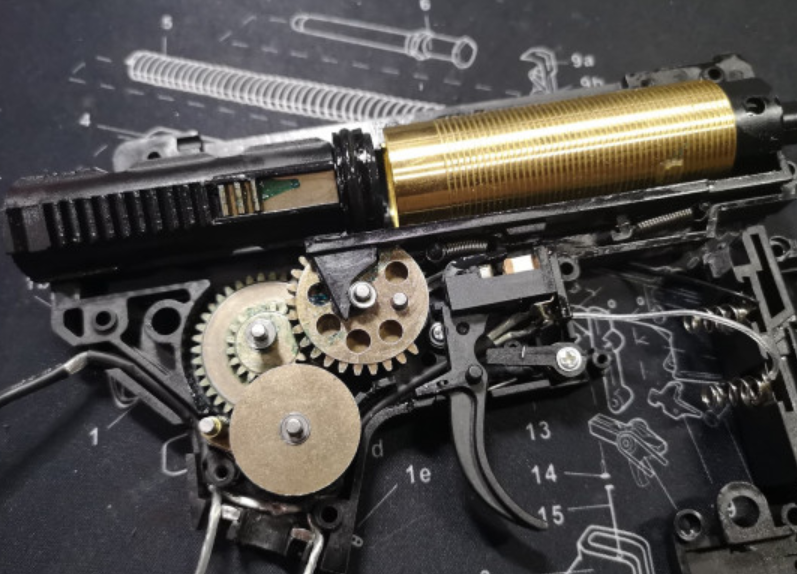
Some dart (and most gel ball) blasters use this mechanism. It uses a rack and pinion mechanism with the pinion only being partly covered with teeth and the rack being pushed from behind by a spring. This means that as the pinion revolves, the rack is forced back until it reaches the point when the pinion has no teeth in contact with it and it springs back. This is connected to a similar plunger mechanism that I mentioned earlier to make an efficient, consistent and somewhat noisy NERF blaster.
The Mod Guide
The Mod Guide
Spring Powered Blasters
Spring Powered Blasters
All manual spring powered blasters have an Air Restrictor, a small plastic device that restricts the flow of air for safety reasons. The easiest way to locate this is by peering down the barrel of front loading spring NERF blasters, and looking at the prongs at the bottom.
Then, open the blaster and trace it from the muzzle all the way to a tiny, weak spring and a plastic cylindrical block with 3 prongs. It is always behind the pin that goes down the hole of a NERF dart. Remove this, and your blaster is now modified! However, this is not recommended for blasters that have multiple firing holes as it could damage the blaster. For rotating barrel blasters or stock fed blasters, this may be more tricky. Locate the end of the plunger air cylinder and look for the same thing as I mentioned before. If necessary, remove the plunger and look for it in the plunger tube.
If you want to get serious about modding, you can do a spring upgrade, by getting a stronger spring than the original, and replacing the old ones. These drastically change performance, so be careful always as they might become quite dangerous. As well as that, the plunger can be worn away earlier without the air restrictor or the spring mod. I hold no liability for the risks and hazards associated with this mod.
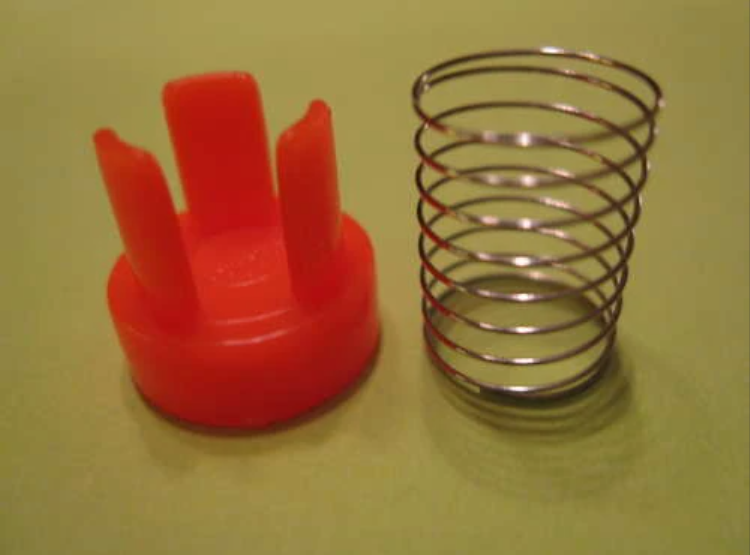
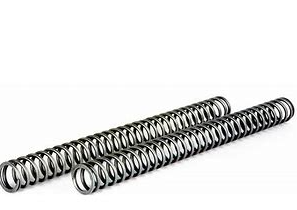
Once you delve deeper into modifying blasters, a useful skill will be to know how to read K-numbers. The equation that will allow you to do this, goes as follows:
K = f / E
where K is the spring constant for that specific spring, F is the force exerted on the spring and E is the extension.
Some companies like Out Of Darts and Worker sell stronger springs to boost performance. Follow instructions for installation given with the spring by the seller.
Flywheel Blasters
Flywheel Blasters
For flywheel blasters, there are multiple options as well. Most semi automatic blasters have mechanical and electrical locks that prevent more than one dart being fired at a time. Usually, these are easy to convert to full auto by simply unscrewing/removing these. You can identify these by firing the blaster while the top part of the shell is removed and watching where the dart/ball stops before firing. Then, slowly, release the trigger and watch which piece moves in place to block the dart/ball.
Make sure to keep that in place, and remove the other mechanical lock. That lock prevents another dart/ball from entering the flywheel when the trigger is pressed. Also, Full Auto mod kits are available, which use a small motor to draw power from the battery when the trigger is pressed, to repeatedly actuate the Nerf Blaster’s firing mechanism.
WARNING THIS PART MAY RESULT IN EXPLOSION OR FIRE!!!
Usually, electric Nerf blasters have underpowered motors due to safety reasons as if there is a voltage surge, the motors will not burn out. Be prepared for a deep dive! Modders will make use of this room for voltage and install a LiPo battery which is a high capacity battery that uses a liquid solvent for the electrolyte instead of a lithium salt. For example, they may use chemicals such as ethyl carbonate, dimethyl carbonate and methyl carbonate. Additionally, in some cases, they can also use solid electrolytes like poly-acrilonitrile and poly (methyl methacrylate). These are able to transfer electrons more efficiently, therefore increasing the voltage.
SAFETY WARNING ⚠️
Whilst modding, it is mandatory to know about these risks and take the necessary precautions to make it as safe as possible.
- Wear eyewear
- Install a voltage regulator and discharge alarm
- Use designated kits and/or consult professionals
- LiPOs can explode when frozen, heated, overcharged, overdischarged, used after the use by date, short circuited, punctured, broken or in any way misused
- Take care when drilling the shell to avoid bursting the LiPO
- Read instructions of LiPO kit
- If LiPO is hot, swollen or smoking after charging, remove from charger and leave the area.
- Keep a fire extinguisher handy
I will not take responsibility for the risks associated with this type of mod.
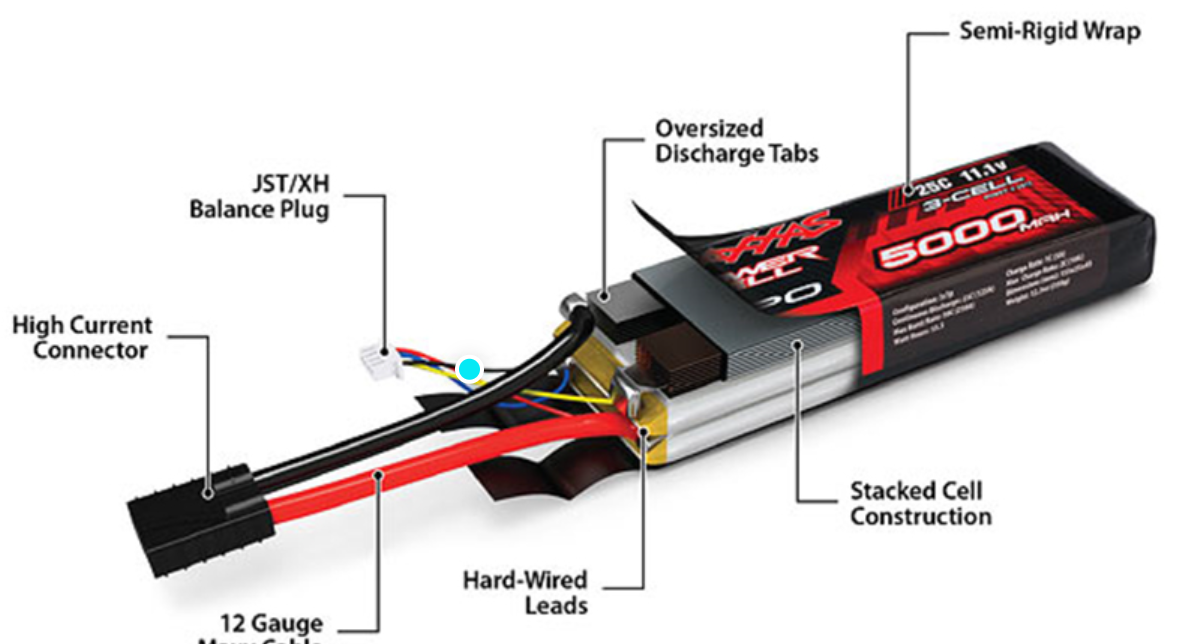
Repeating Plunger Blaster
Repeating Plunger Blaster
For repeating plunger mechanism, both lipo and spring mod can be used to increase fire rate and power. The spring has to still be weak enough to be able to be pulled back by the mechanism, and the same rules apply as for lipo and traditional nerf blasters.
Hardcore NERF modders will often use a combination of the different mod techniques along with repaints to achieve their desired custom blaster. Some people may even 3D print their own NERF blasters or parts to achieve the greatest power, using off the shelf springs and parts to reach their goal.
One of the most powerful spring powered NERF blasters is the NERF Caliburn, a NERF Blaster that uses two K26 springs to achieve 250 to 300 FPS (Feet Per Second). Also, the Lepus Nerf is a flywheel blaster that can fire 50 (!) darts PER SECOND! Sadly, the prices for both are well above £100, and are probably not suitable for beginners.
A useful tool in any nerf modder’s selection is a ballistic chronograph, which is a device that can measure the speed of a projectile launched from a NERF blaster, and is useful for seeing how successful your mod was. Along with this, pliers, a space to work, screwdrivers and a soldering iron are recommended while modding to help remove the shell.
A useful tool in any nerf modder’s selection is a ballistic chronograph, which is a device that can measure the speed of a projectile launched from a NERF blaster, and is useful for seeing how successful your mod was. Along with this, pliers, a space to work, screwdrivers and a soldering iron are recommended while modding to help remove the shell.
These methods, combined with a creative mind will allow you to make NERF something more than just toys; it’s an engineering challenge for anyone to take on. With the right tools and practice, you will soon be an experienced modder. However, it is also advisable to consult more experienced modders (online on websites or Youtube or in person) so you can see these techniques being used.
The engineering behind NERF modding is one thing; creativity and problem solving is another. Don’t let a failed mod, a broken NERF blaster or exploded flywheel discourage you from modding. Take it as a learning curve, find out what caused it and start again, this time taking care to avoid that mistake.
Remember, some blasters are easier to mod than other ones. Generally, mechanical mods are easier to do than electrical mods i.e. LiPo mods.
Whether it’s industrial flywheels or pneumatic drills, the technology used in NERF blasters have a multitude of real world applications, and knowledge in these areas can open up many opportunities for career options!
Have you ever tried to mod a NERF blaster? Share your favourite nerf blaster or mod in the comments below and feel free to ask any questions on Nerf modding or specific blasters. By the way, my favourite Nerf Blaster is the Nerf Rival Perses MXIX-5000!
